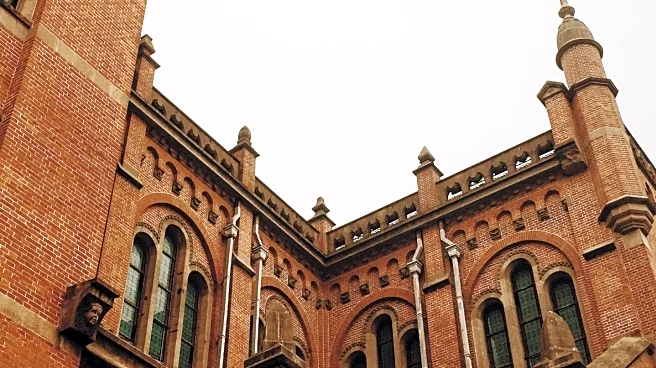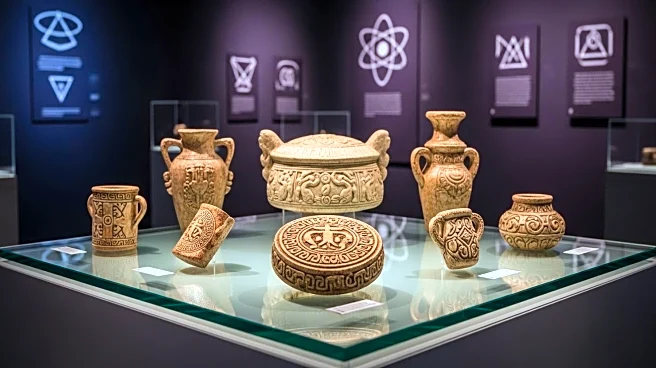What is the story about?
What's Happening?
A thrift shopper in Chilliwack, Canada, discovered a set of ancient artifacts, including 11 rings and two medallions, priced at just $30. The items were donated to Simon Fraser University (SFU) after being identified as potentially significant by a customer with an archaeology background. The artifacts, believed to be medieval, are now housed at SFU's museum in Burnaby, British Columbia. Sabrina Higgins, an associate professor of global humanities and archaeology at SFU, suggested the objects might originate from the Western Roman Empire. The university plans to use the artifacts for educational purposes, designing a course around their identification and exploring their origins.
Why It's Important?
The discovery and donation of these artifacts present a unique educational opportunity for SFU students, allowing them to engage in hands-on archaeological research. The artifacts could provide new insights into medieval history and culture, potentially altering existing historical narratives. The university's investigation into the authenticity and origins of the artifacts could also contribute to broader discussions on artifact provenance and the ethics of collecting and displaying historical objects. This event underscores the importance of vigilance in identifying and preserving historical artifacts, even those found in unexpected places like thrift stores.
What's Next?
SFU plans to conduct a detailed study of the artifacts, utilizing advanced research technologies to determine their origins and authenticity. The university is also considering the possibility that the artifacts were looted or forged, which could impact their historical value and the narrative surrounding them. The course designed around these artifacts will provide students with practical experience in archaeological research and artifact identification. The findings from this research could lead to further academic publications and discussions within the archaeological community.
Beyond the Headlines
The discovery raises questions about the circulation and sale of potentially significant historical artifacts in everyday settings like thrift stores. It highlights the role of public awareness and education in preserving cultural heritage. The ethical implications of artifact collection and the responsibilities of institutions in verifying provenance are also brought to the forefront. This case may inspire similar vigilance and collaboration between local communities and academic institutions in identifying and preserving historical artifacts.
AI Generated Content
Do you find this article useful?













